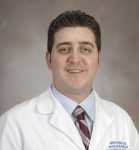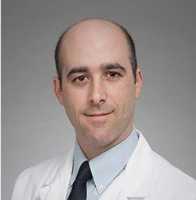MedicalResearch.com Interview with:
Sunil A. Sheth, MD
Department of Neurology
McGovern Medical School at UTHealth
Houston, TX 77030
MedicalResearch.com: What is the background for this study? What are the main findings?
Response: There is no country in the world where the absolute number of people living with or died from stroke has declined between 1990 and 2013. In the US, approximately 795,000 people experience a stroke each year with nearly 90% being acute ischemic stroke (AIS), which remains the leading cause of adult disability in the US.
In 2015 landmark clinical trials demonstrated that endovascular stroke treatments (EST) for patients with large vessel occlusion (LVO) leads to dramatic improvements in patient outcomes. However, in the wake of these results, stroke systems of care around the globe are now faced with the daunting task of ensuring that patients with AIS have access to appropriate screening and therapy.
The evidence of benefit for endovascular stroke that emerged from these trials was derived from treatments rendered almost exclusively at high volume stroke centers, with specialized neuro-imaging, neuro-intensive care, neuro-rehabilitation and neuro-nursing. However, since the publication and adoption of these findings into guidelines, it has become well-established that the likelihood of good neurologic outcome for these patients remains dependent on minimizing delays in treatment. Even 15-minute delays in endovascular reperfusion have been associated with quantifiable decrements in clinical outcomes. As such, there has been an increase in demand for the procedure as well as calls for the dissemination of the treatment away from tertiary-care referral centers into the community, to avoid the costly delays associated with inter-hospital transfer (IHT). On the other hand, transferring endovascular stroke patients to higher volume centers has also been associated with reduced mortality. In the absence of clear data on the relative efficacy of EST in lower volume centers, this lack of clarity on the optimal distribution of endovascular stroke resources had led to considerable confusion, with stroke center certifying agencies such as The Joint Commission initially requiring physician and hospital minimal EST volume requirements for certification, and then very recently revoking and then reinstating that criterion.
Given the need to structure stroke systems of care in the modern endovascular stroke era, as well as the poorly characterized effect on EST outcomes away from tertiary-care referral centers, understanding the trends in treatment patterns as well as outcomes in relation to treatment volumes and IHT is of vital importance. The study described here provides for the first time large-scale data on the utilization of the procedure as well as the finding that its outcomes are directly tied to annual volumes.
(more…)
Author Interviews, Genetic Research, JAMA, Race/Ethnic Diversity, Stroke / 11.02.2019
Link Between Apolipoprotein E and Brain Hemorrhage Varies by Ethnicity
MedicalResearch.com Interview with:
Sandro Marini, MD
Research Fellow
Jonathan Rosand Laboratory
Massachusetts General Hospital
Boston, MA 02114
MedicalResearch.com: What is the background for this study? What are the main findings?
Response: The epsilon(ε) 4 allele of the Apolipoprotein E (APOE) gene increases risk for Alzheimer’s disease (AD) and intracerebral hemorrhage (ICH).
In both diseases, it is believed to increase risk through the deposition of beta-amyloid within the brain and blood vessels, respectively. The effect of APOE ε4 on both AD and ICH risk changes across populations, for unclear reasons.
In our study, we confirmed the role of APOE ε4 for ICH risk in whites and found that the risk-increasing effect of the 4 allele is demonstrable in Hispanics only when balancing out the effect of hypertension.
(more…)
Author Interviews, Health Care Systems, JAMA, Stroke, University Texas / 11.02.2019
Stroke: Outcomes of Patients Transferred for Thrombectomy
MedicalResearch.com Interview with:
Amrou Sarraj, MD, Associate Professor
Department of Neurology
McGovern Medical School
The University of Texas Health Science Center at Houston.
MedicalResearch.com: What is the background for this study? What are the main findings?
Response: Secondary analyses of trials showing efficacy and safety of thrombectomy within 6-8 hours of stroke onset showed that patients who were transferred to centers performing thrombectomy from another hospital had worse outcomes than patients who presented directly to the thrombectomy centers. We wanted to assess if the thrombectomy outcomes differ between transferred patients and patients directly coming to the thrombectomy centers when patients are selected with advanced perfusion imaging.
We found that thrombectomy outcome rates were similar between patients who presented directly vs transferred from another hospital, including functional independence and safety outcomes.
(more…)
Author Interviews, Diabetes, JAMA, Metabolic Syndrome, Stroke / 10.02.2019
Pioglitazone (Actos) Reduced Risk of Secondary Stroke and New Onset of Diabetes
MedicalResearch.com Interview with:
David Spence M.D., FRCPC, FAHA
Professor of Neurology and Clinical Pharmacology
Director, Stroke Prevention & Atherosclerosis Research Centre,
Robarts Research Institute, Western University
London, ON Canada
MedicalResearch.com: What is the background for this study? What are the main findings?
Response: The motivation for the study was the chair of the committee that advises the Ontario Drug Benefit which medications to pay for said the IRIS results were not relevant to clinical practice. This because the Insulin Resistance Intervention after Stroke (IRIS) trial reported effects of pioglitazone in patients with stroke or TIA and insulin resistance assessed by the Homeostasis Model Assessment of Insulin Resistance (HOMA-IR) score for insulin resistance.1 ( However, few clinicians measure a HOMA-iR score, so the clinical impact of that trial was limited.
In this study we analyzed the effect of pioglitazone in stroke/TIA patients with prediabetes, which is commonly assessed by clinicians. Prediabetes was defined by the American Diabetes Association: a glycosylated hemoglobin (A1C) of 5.7% to <6.5% (we did not do glucose tolerance tests). We analyzed primarily the results for patients with 80% adherence, but also did an intention-to-treat (ITT) analysis. The reason for focusing on patients with good adherence was that pioglitazone cannot be taken by about 10-20% of patients, because of fluid retention and weight gain (mainly due to fluid retention). (The reasoning was that third party payers would not need to pay for the medication in patients who do not take it.)
In stroke/TIA patients with good adherence, the benefits of pioglitazone were greater than in the original IRIS trial. We found a 40% reduction of stroke/MI, a 33% reduction of stroke, and an 80% reduction of new-onset diabetes, over 5 years. Pioglitazone also improved blood pressure, triglycerides and HDL-cholesterol. As expected, pioglitazone was somewhat less beneficial in the ITT analysis.
Fluid retention can usually be managed by reducing the dose of pioglitazone; even small doses still have a beneficial effect . Also, amiloride has been shown to reduce fluid retention with pioglitazone.
- Kernan WN, Viscoli CM, Furie KL, Young LH, Inzucchi SE, Gorman M, Guarino PD, Lovejoy AM, Peduzzi PN, Conwit R, Brass LM, Schwartz GG, Adams HP, Jr., Berger L, Carolei A, Clark W, Coull B, Ford GA, Kleindorfer D, O'Leary JR, Parsons MW, Ringleb P, Sen S, Spence JD, Tanne D, Wang D, Winder TR and Investigators IT. Pioglitazone after Ischemic Stroke or Transient Ischemic Attack. N Engl J Med. 2016;374:1321-31.
AHA Journals, Author Interviews, Diabetes, Stroke / 08.02.2019
Stroke: Intensive Blood Sugar Control Did Not Improve Outcomes
MedicalResearch.com Interview with:
Karen C. Johnston MD
Professor and Chair, Neurology
School of Medicine
University of Virginia
MedicalResearch.com: What is the background for this study?
Response: We know that acute ischemic stroke patient with hyperglycemia at presentation have worse outcomes. We also know if we lower the glucose too low that this is bad for ischemic brain also. T
he SHINE trial addressed a world wide debate about whether intensive treatment of hyperglycemia is beneficial. We assessed the efficacy and safety of an intensive glucose control protocol with a target glucose of 80-130 mg/dL compared to a more standard protocol with a target of less than 180 mg/dL.
(more…)
Author Interviews, Pain Research, Stroke / 04.02.2019
Dive Deep Into Migraine’s Link to Increased Stroke Incidence
MedicalResearch.com Interview with
Michelle Androulakis, MD, MS, FAHS
Chief of Neurology
WJB Dorn VA Medical Center and
Faculty at University of South Carolina.
Columbia, SC
MedicalResearch.com: What is the background for this study? What are the main findings?
Response: Even though Migraine with aura was associated with an increased risk of ischemic stroke in the Atherosclerosis Risk in Communities study (ARIC), our post-hoc showed unexpected results that onset of such migraines before age 50 years is not associated with such risk. Instead, later onset of migraine with aura after age of 50 was linked with a higher risk of ischemic stroke.
Total of 447 migraineurs with aura (MA) and 1128 migraineurs without aura (MO) among 11,592 participants were included in the analysis. There was a two-fold increased risk of ischemic stroke when the age of migraineurs with aura onset was 50 years or older as compared with no headache participants, MO was not associated with increased stroke risk regardless of age of onset. (more…)
Author Interviews, CMAJ, Heart Disease, Occupational Health, Social Issues, Stroke / 07.01.2019
Heart Attacks and Stroke Cause Blows to Financial Health
MedicalResearch.com Interview with:
Allan Garland, MD, MA
Professor of Medicine & Community
Health Sciences
Co-Head, Section of Critical Care Medicine
University of Manitoba
MedicalResearch.com: What is the background for this study?
Response: Heart attacks, strokes and cardiac arrest are common acute health events. Most studies of serious acute health events look at outcomes such as death and how long is spent in the hospital. But for working age people, the ability to work and earn income are very important outcomes that have rarely been studied.
We set out to carefully measure, across Canada, how much heart attacks, strokes and cardiac arrests affect the ability of working age people to work and earn.
(more…)
Author Interviews, Global Health, Stroke / 26.12.2018
Stroke Prevention Should Begin in Young Adults
MedicalResearch.com Interview with:
Gregory A. Roth MD MPH
Assistant Professor, Medicine - Cardiology
Adjunct Assistant Professor, Global Health
Adjunct Assistant Professor, Health Metrics Sciences
School of Public Health
University of Washington
Seattle, WA
MedicalResearch.com: What is the background for this study? What are the main findings?
Response: We found that globally, one in four people over age 25 is at risk for stroke during their lifetime. But we also found large geographic variation, including a nearly five-fold difference in lifetime stroke risk worldwide, with the highest risk in East Asia (38.8%), Central Europe (31.7%), and Eastern Europe (31.6%), and the lowest risk in eastern sub-Saharan Africa (11.8%). Chinese men and Latvian women had the world’s highest estimated lifetime stroke risk in 2016. The lifetime stroke risk on average for 25-year-olds in 2016 ranges from 8% to 39%, depending on the country in which they live.
This is the first time a study has produced estimates of lifetime stroke risk starting at age 25, whereas previous studies begin at age 45. These findings suggest that adults need to think about their long-term health risks, including stroke, at a much younger age. Additionally, one’s risk of stroke over the course of your lifetime depends on where you live. Given the burden of stroke among adults is dependent on modifiable risk factors and the characteristics of health systems, our findings may be useful for long-term planning, especially in terms of prevention and public education. (more…)
Author Interviews, JAMA, Neurology, Stroke / 27.11.2018
Stroke: Cerebellar Stimulation Improved Motor Function
MedicalResearch.com Interview with:
Giacomo Koch, MD, PhD
Laboratorio di Neurologia Clinica e Comportamentale
Fondazione S. Lucia I.R.C.C.S.
Italy
MedicalResearch.com: What is the background for this study? What are the main findings?
Response: We show in this paper that non invasive stimulation of the cerebellum in patients with stroke is able to improve motor functions.
In particular we found that after three weeks of repetitive TMS of the intact cerebellum patients with hemiparesis due to stroke in the cerebral hemisphere remarkably improved their ability to walk and keep their balance, thus highly reducing the risk of fall.
(more…)
AHA Journals, Author Interviews, Imperial College, Mineral Metabolism, Stroke / 27.10.2018
Is There a Link Between Iron Intake and Stroke?
MedicalResearch.com Interview with:
Dipender Gill
Imperial College Healthcare NHS Trust
London, United Kingdon
MedicalResearch.com: What is the background for this study? What are the main findings?
Response: Iron status has previously been associated with risk of various types of cardiovascular disease, including stroke. However, the observational research methodologies that identified these associations can be affected by confounding from environmental factors and reverse causation.
We used randomly allocated genetic variants that affect iron status to investigate its effect on risk of different types of ischemic stroke, and found evidence to support that higher iron status increases risk of cardioembolic stroke.
(more…)
AHA Journals, Author Interviews, Mediterranean Diet, Stroke / 20.09.2018
Mediterranean Diet Linked To Stroke Risk Reduction in Women
MedicalResearch.com Interview with:
 Professor Phyo Kyaw Myint MBBS MD FRCP(Edin) FRCP(Lond)
Clinical Chair in Medicine of Old Age
Academic Lead: Ageing Clinical & Experimental Research &
Director of Clinical Academic Training Development
The Lead Academic, Aberdeen Clinical Academic Training (ACAT) Programmes
School of Medicine, Medical Sciences & Nutrition
College of Life Sciences & Medicine, University of Aberdeen
MedicalResearch.com: What is the background for this study? What are the main findings?
Response: While Mediterranean Diet has been linked to reduced stroke risk it remains unclear
(1) its impact on populations within non-Mediterranean countries;
(2) its specific impact on different gender;
(3) the effect observed when using more robust dietary assessments; and (4) which specific components of the diet are most protective.
We therefore studied more than 23 thousand men and women (mainly British Caucasian) aged 40 years or older in Norfolk, UK as part of EPIC-Norfolk study and we found that the greater adherence to Mediterranean dietary pattern is linked to a significant reduction in stroke risk in women but not in men. This benefit was seen across the whole middle and older age population (particularly for women) regardless of their existing risk factors such as high blood pressure.
(more…)
Professor Phyo Kyaw Myint MBBS MD FRCP(Edin) FRCP(Lond)
Clinical Chair in Medicine of Old Age
Academic Lead: Ageing Clinical & Experimental Research &
Director of Clinical Academic Training Development
The Lead Academic, Aberdeen Clinical Academic Training (ACAT) Programmes
School of Medicine, Medical Sciences & Nutrition
College of Life Sciences & Medicine, University of Aberdeen
MedicalResearch.com: What is the background for this study? What are the main findings?
Response: While Mediterranean Diet has been linked to reduced stroke risk it remains unclear
(1) its impact on populations within non-Mediterranean countries;
(2) its specific impact on different gender;
(3) the effect observed when using more robust dietary assessments; and (4) which specific components of the diet are most protective.
We therefore studied more than 23 thousand men and women (mainly British Caucasian) aged 40 years or older in Norfolk, UK as part of EPIC-Norfolk study and we found that the greater adherence to Mediterranean dietary pattern is linked to a significant reduction in stroke risk in women but not in men. This benefit was seen across the whole middle and older age population (particularly for women) regardless of their existing risk factors such as high blood pressure.
(more…)
 Professor Phyo Kyaw Myint MBBS MD FRCP(Edin) FRCP(Lond)
Clinical Chair in Medicine of Old Age
Academic Lead: Ageing Clinical & Experimental Research &
Director of Clinical Academic Training Development
The Lead Academic, Aberdeen Clinical Academic Training (ACAT) Programmes
School of Medicine, Medical Sciences & Nutrition
College of Life Sciences & Medicine, University of Aberdeen
MedicalResearch.com: What is the background for this study? What are the main findings?
Response: While Mediterranean Diet has been linked to reduced stroke risk it remains unclear
(1) its impact on populations within non-Mediterranean countries;
(2) its specific impact on different gender;
(3) the effect observed when using more robust dietary assessments; and (4) which specific components of the diet are most protective.
We therefore studied more than 23 thousand men and women (mainly British Caucasian) aged 40 years or older in Norfolk, UK as part of EPIC-Norfolk study and we found that the greater adherence to Mediterranean dietary pattern is linked to a significant reduction in stroke risk in women but not in men. This benefit was seen across the whole middle and older age population (particularly for women) regardless of their existing risk factors such as high blood pressure.
(more…)
Professor Phyo Kyaw Myint MBBS MD FRCP(Edin) FRCP(Lond)
Clinical Chair in Medicine of Old Age
Academic Lead: Ageing Clinical & Experimental Research &
Director of Clinical Academic Training Development
The Lead Academic, Aberdeen Clinical Academic Training (ACAT) Programmes
School of Medicine, Medical Sciences & Nutrition
College of Life Sciences & Medicine, University of Aberdeen
MedicalResearch.com: What is the background for this study? What are the main findings?
Response: While Mediterranean Diet has been linked to reduced stroke risk it remains unclear
(1) its impact on populations within non-Mediterranean countries;
(2) its specific impact on different gender;
(3) the effect observed when using more robust dietary assessments; and (4) which specific components of the diet are most protective.
We therefore studied more than 23 thousand men and women (mainly British Caucasian) aged 40 years or older in Norfolk, UK as part of EPIC-Norfolk study and we found that the greater adherence to Mediterranean dietary pattern is linked to a significant reduction in stroke risk in women but not in men. This benefit was seen across the whole middle and older age population (particularly for women) regardless of their existing risk factors such as high blood pressure.
(more…)
MedicalResearch.com Interview with:
Larry B. Goldstein, MD, FAAN, FANA, FAHA
Ruth L. Works Professor and Chairman, Department of Neurology
Co-Director, Kentucky Neuroscience Institute
KY Clinic - University of Kentucky
Lexington, KY 40536
MedicalResearch.com: What is the background for this study? What are the main findings?
Response: Extensive work in laboratory models over several decades show that d-amphetamine, combined with task-relevant experience, can facilitate recovery after stroke and traumatic brain injury affecting the cerebral cortex.
Results from clinical trials have been inconsistent, in part because preclinical data indicate that the effect of amphetamines as part of a regimen for stroke recovery is biologically complex. We conducted this multicenter pilot study to explore some of that complexity.
(more…)
Author Interviews, JAMA, Stroke, UCLA / 24.07.2018
Ultra-Early Deterioration Predicts Poor Outcome in Stroke
MedicalResearch.com Interview with:
Kristina Shkirkova
Doctoral Student in Neuroscience
Zilkha Neurogenetic Institute
University of Southern California
Los Angeles, CA
MedicalResearch.com: What is the background for this study?
Response: Stroke is the second leading cause of death and a leading cause of adult disability worldwide. Stroke onset is sudden with symptoms progressing rapidly in the first hours after onset. The course of symptom progression after stroke is not well studied in the ultra-early window before hospital arrival and during early postarrival period.
There is an urgent need to characterize the frequency, predictors, and outcomes of neurologic deterioration among stroke patients in the earliest time window.
(more…)
Author Interviews, CMAJ, Heart Disease, Lifestyle & Health, Stroke / 23.07.2018
Algorithm Allows Patients To Calculate Their Risk of Stroke and Heart Disease
MedicalResearch.com Interview with:
Dr. Doug Manuel MD, MSc, FRCPC
Professor and Senior Scientist
Ottawa Hospital Research Institute | L’Institut de Recherche de l’Hôpital d’Ottawa
Department of Family Medicine, University of Ottawa
Départment de Médicine Familiale
Université d’Ottawa
MedicalResearch.com: What is the background for this study? What are the main findings?
Response: A lot of people are interested in healthy living, but often we don't have that discussion in the doctor's office," says Dr. Manuel, who is also a professor at the University of Ottawa. "Doctors will check your blood pressure and cholesterol levels, but they don't necessarily ask about lifestyle factors that could put you at risk of a heart attack and stroke. We hope this tool can help people — and their care team — with better information about healthy living and options for reducing their risk of heart attack and stroke."
"What sets this cardiovascular risk calculator apart is that it looks at healthy living, and it is better calibrated to the Canadian population," says Dr. Doug Manuel, lead author, senior scientist at The Ottawa Hospital and a senior core scientist at the Institute for Clinical Evaluative Sciences (ICES).” (more…)
Author Interviews, Heart Disease, JAMA, PAD, Stroke / 19.07.2018
USPSTF and PAD: Uncertain if Nontraditional Risk Factors Can Predict Heart Disease or Stroke Risk
MedicalResearch.com Interview with:
Dr. Michael Barry MD
Director of the Informed Medical Decisions Program
Health Decision Sciences Center at Massachusetts General Hospital
Physician at Massachusetts General Hospit
Professor of Medicine,Harvard Medical School
MedicalResearch.com: What is the background for this study? What are the main findings?
Response: Peripheral artery disease—which is known as PAD—is a disease that reduces blood flow to a person’s limbs, especially the legs. PAD can cause leg and foot pain when resting or walking, wounds to not heal properly, and loss of limbs. Additionally, people with PAD are more likely to experience a cardiovascular disease event, such as heart attack and stroke.
The U.S. Preventive Services Task Force looked at the latest research to see if screening people without signs or symptoms of PAD using the ankle brachial index (ABI) can prevent heart attack, stroke, or other adverse health effects. We found that more research is needed to determine if screening with ABI can help to identify PAD and/or prevent heart attack or stroke in people without signs or symptoms.
Additionally, in a separate recommendation statement, we looked into the effectiveness of what we call nontraditional risk factors for assessing a person’s risk of cardiovascular disease. Clinicians typically check someone’s risk for cardiovascular disease using traditional risk factors, such as age, race, and smoking status. The Task Force looked at the current evidence to see if three additional, nontraditional risk factors can help prevent heart disease or stroke. The nontraditional factors considered were ABI measurements, an elevated amount of high-sensitivity C-reactive protein (hsCRP) in the blood, and an elevated amount of calcium in the coronary arteries (CAC score).
In this recommendation, we also found that there is insufficient evidence to recommend for or against using nontraditional risk factors in addition to those normally used to assess cardiovascular disease risk in people without signs or symptoms. (more…)
Author Interviews, Heart Disease, Nutrition, Stroke / 16.07.2018
Study Finds No Link Between Dairy Fats and Heart Disease or Mortality
MedicalResearch.com Interview with:
 Marcia C. de Oliveira Otto, PhD, FAHA
Assistant Professor
Division of Epidemiology, Human Genetics and Environmental Sciences
University of Texas
Houston, TX 77030-3900 |
MedicalResearch.com: What is the background for this study? What are the main findings?
Response: Our research adds to a growing body of evidence showing no harm in relation to heart disease or overall mortality associated with consumption of whole-fat dairy foods.
The findings also indicate that one of three fatty acids present in dairy fat was linked to lower risk of stroke among older adults. To the best of our knowledge, ours was the first large study to use repeated measures of fatty acids over time and evaluate association with mortality in older adults, which allowed us to expand and contribute to this important debate regarding fat intake and health.
(more…)
Marcia C. de Oliveira Otto, PhD, FAHA
Assistant Professor
Division of Epidemiology, Human Genetics and Environmental Sciences
University of Texas
Houston, TX 77030-3900 |
MedicalResearch.com: What is the background for this study? What are the main findings?
Response: Our research adds to a growing body of evidence showing no harm in relation to heart disease or overall mortality associated with consumption of whole-fat dairy foods.
The findings also indicate that one of three fatty acids present in dairy fat was linked to lower risk of stroke among older adults. To the best of our knowledge, ours was the first large study to use repeated measures of fatty acids over time and evaluate association with mortality in older adults, which allowed us to expand and contribute to this important debate regarding fat intake and health.
(more…)
 Marcia C. de Oliveira Otto, PhD, FAHA
Assistant Professor
Division of Epidemiology, Human Genetics and Environmental Sciences
University of Texas
Houston, TX 77030-3900 |
MedicalResearch.com: What is the background for this study? What are the main findings?
Response: Our research adds to a growing body of evidence showing no harm in relation to heart disease or overall mortality associated with consumption of whole-fat dairy foods.
The findings also indicate that one of three fatty acids present in dairy fat was linked to lower risk of stroke among older adults. To the best of our knowledge, ours was the first large study to use repeated measures of fatty acids over time and evaluate association with mortality in older adults, which allowed us to expand and contribute to this important debate regarding fat intake and health.
(more…)
Marcia C. de Oliveira Otto, PhD, FAHA
Assistant Professor
Division of Epidemiology, Human Genetics and Environmental Sciences
University of Texas
Houston, TX 77030-3900 |
MedicalResearch.com: What is the background for this study? What are the main findings?
Response: Our research adds to a growing body of evidence showing no harm in relation to heart disease or overall mortality associated with consumption of whole-fat dairy foods.
The findings also indicate that one of three fatty acids present in dairy fat was linked to lower risk of stroke among older adults. To the best of our knowledge, ours was the first large study to use repeated measures of fatty acids over time and evaluate association with mortality in older adults, which allowed us to expand and contribute to this important debate regarding fat intake and health.
(more…)
Author Interviews, Emergency Care, Neurology, Stroke / 13.07.2018
How Quickly and Accurately Can Ischemic Stroke Be Diagnosed and Treated with tPA?
MedicalResearch.com Interview with:
Perttu J. Lindsberg, MD, PhD
Professor of Neurology
Clinical Neurosciences and Molecular Neurology
Research Programs Unit, Biomedicum Helsinki
University of Helsinki Helsinki, Finland
MedicalResearch.com: What is the background for this study?
Response: The past 20 years in shaping the Helsinki model in stroke thrombolysis have proven that we can be very fast in examining the patient, completing the imaging and starting thrombolytic therapy. This is a university hospital center that receives roughly three stroke suspects per day for evaluation of recanalization therapies. Already seven years ago we were able to push the median ’door-to-needle’ time permanently below 20 minutes. What we had not been monitoring was how well we had kept up the accuracy of our emergengy department (ED) diagnostic process. Prehospital emergency medical services (EMS) have been trained to focus on suspecting thrombolysis-eligible stroke and we usually get also pre-notifications of arriving stroke code patients during transportation, but the diagnosis on admission is an independent clinical judgment as the CT findings are largely nondiagnostic for acute changes.
The admission evaluation of suspected acute stroke is therefore a decisive neurologic checkpoint, building the success of acute treatments such as recanalization therapy, but is complicated by differential diagnosis between true manifestations of stroke and numerous mimicking conditions. Although we have invested a lot on training and standardized ED procedures, time pressure and therapy-geared expectations may blur the diagnostic process.
With this background, we embarked on an in-depth-analysis of the admission and final diagnoses of stroke code patients, as well as misdiagnoses, immediate treatment decisions and their consequences.
(more…)
AHA Journals, Author Interviews, Blood Pressure - Hypertension, Stroke / 10.06.2018
Under New Lower Blood Pressure Guidelines, More Stroke Victims Would Survive
MedicalResearch.com Interview with:
Dr. Alain Lekoubou Looti, MD Msc
Clinical Neurophysiology
Department of Neurosciences
College of Medicine
Medical University of South Carolina
MedicalResearch.com: What is the background for this study? What are the main findings?
Response: Hypertension is strongly associated with stroke. Individuals who suffer a stroke are more likely to have another stroke. They also die at a rate twice as high as those who experience a first event. We have evidence that treating hypertension reduces the risk of recurrence stroke among stroke survivors.
Prior hypertension guidelines defined hypertension for a systolic blood pressure (top number) equal or greater than 140 and a diastolic blood pressure (lower number) equal or greater than 90. The American college of cardiology/American heart association have published a new guideline to help healthcare providers identify and treat blood pressure including among stroke survivors. The threshold to define blood pressure has been lowered to 130 for the top number and 80 for the lower number for everyone. Unlike the general population, pharmacological treatment for stroke survivors is now recommended for systolic blood pressure greater than or equal than 130 and diastolic blood pressure greater than or equal to 80. In the same line achieving a blood pressure of less than 130/80 mmHg in stroke survivors is now recommended. In the stroke community, there has been mounting evidence to suggest that achieving lower blood pressure goal was desirable. When the new guidelines were published, we could not wait any longer to see the impact of the new guidelines on the proportion of stroke survivors with hypertension, recommended pharmacological treatment, and above blood pressure target. We were also curious to see how the new guidelines would potentially affect mortality among stroke survivors.
We have found that the new guidelines would result in a nearly 67% (from 29.9% to 49.8%) to relative increase in the proportion of U.S. stroke survivors diagnosed with hypertension and 54% (from 36.3% to 56%) relative increase in those not within the recommended BP target. We have also found that if the new guidelines were applied, this would result in a 33% relative drop in mortality. (more…)
Author Interviews, Heart Disease, JAMA, Stroke / 19.05.2018
Oral Anticoagulants Still Underused in AFib Patients
MedicalResearch.com Interview with:
Anna Gundlund, MD, PhD
Herlev-Gentofte Hospital, Department of Cardiology
Denmark
MedicalResearch.com: What is the background for this study? What are the main findings?
Response: Atrial fibrillation increases a person’s risk of ischemic strokes up to 5-fold. Oral anticoagulation therapy lowers this risk effectively (>60%) and is therefore recommended for patients with atrial fibrillation and at least 1-2 other risk factors for stroke.
Our study show, that oral anticoagulation therapy is still underused in patients with atrial fibrillation – even after a stroke event. In stroke survivors with atrial fibrillation, oral anticoagulation therapy were associated with better outcomes than no oral anticoagulation therapy. (more…)
Author Interviews, NEJM, Stroke, University Texas / 16.05.2018
Benefits of Clopidogrel and Aspirin In Minor Stroke and High-Risk TIA
MedicalResearch.com Interview with:
Dr. S. Claiborne "Clay" Johnston MD, PhD
Dean
Vice President for Medical Affairs
Frank and Charmaine Denius Distinguished Dean’s Chair
Dell Medical School
The University of Texas at Austin
MedicalResearch.com: What is the background for this study? What are the main findings?
Response: Prior studies have shown that the risk of a stroke or other ischemic events is high in the days to weeks after a TIA or minor stroke.
We sought to test whether blocking platelet aggregation more effectively with clopidogrel plus aspirin could reduce this risk compared to aspirin alone. We found that the combination did reduce risk of major ischemic events. It also showed a small increase in risk of major hemorrhage, but for most people the benefits would outweigh the potential risk.
(more…)
Author Interviews, NEJM, Stroke / 30.04.2018
Stroke: Which Clot Buster Drug Works Best?
MedicalResearch.com Interview with:
A/Prof Bruce Campbell MBBS(Hons), BMedSc, PhD, FRACP
Consultant Neurologist, Head of Stroke
Department of Neurology, Royal Melbourne Hospital
Principal Research Fellow,Melbourne Brain Centre @ RMH
Department of Medicine
University of Melbourne Australia
MedicalResearch.com: What is the background for this study? What are the main findings?
Response: Patients with stroke due to a large blood vessel in the brain receive a clot-dissolving medication followed by clot retrieval surgery performed via an angiogram. The standard clot dissolving medication "alteplase" rarely opens the artery prior to clot retrieval surgery. Tenecteplase is genetically modified form of alteplase that may be more effective and is widely available (it is the standard clot dissolving medication used for heart attacks). It can be given over 10 seconds instead of the 1 hour required to infuse alteplase, meaning that patients can be transferred between hospitals to receive treatment more easily. Tenecteplase is also less expensive than alteplase.
In EXTEND-IA TNK we found that tenecteplase doubles the number of patients who have blood flow restored to the brain earlier than is possible with clot retrieval surgery (22% vs 10%) and improves patient outcomes compared to the current standard medication called alteplase.
1 in 5 tenecteplase treated patients have blood flow rapidly restored and do not require clot retrieval surgery compared to 1 in 10 with alteplase.
(more…)
Author Interviews, Emory, Hematology, JAMA, Neurological Disorders, Stroke / 23.04.2018
Is Sickle Cell Really a Risk Factor for Stroke?
MedicalResearch.com Interview with :
Dr. Hyacinth I Hyacinth MD
Aflac Cancer and Blood Disorder Center, Emory Children’s Center, Department of Pediatrics, Emory University School of Medicine
Atlanta, GA 30322
MedicalResearch.com: What is the background for this study?
This study was conducted against the backdrop of a significantly higher risk for stroke among African Americans compared to non-Hispanic Whites, despite adjusting for traditional risk factors. Also, sickle cell disease is a well-known genetic risk factor for stroke and recent studies show that sickle cell trait is a risk factor for chronic kidney disease, venous thromboembolism and pulmonary embolism, all of which are potential risk factors for stroke.
(more…)
Author Interviews, Blood Pressure - Hypertension, Brigham & Women's - Harvard, JAMA, Stroke / 16.04.2018
With Brain Microbleeds, Can Patients Tolerate Lower Blood Pressure?
MedicalResearch.com Interview with:
Dr. Joshua Goldstein MD, PhD
J. Philip Kistler Stroke Research Center
Division of Neurocritical Care and Emergency Neurology, Department of Neurology MGH
Harvard Medical School, Boston Department of Emergency Medicine
Massachusetts General Hospital
for the Antihypertensive Treatment of Acute Cerebral Hemorrhage 2 (ATACH-2) and the Neurological Emergencies Treatment Trials (NETT) Network Investigators
MedicalResearch.com: What is the background for this study? What are the main findings?
Response: It’s hard to know how aggressively to lower blood pressure in acute intracerebral hemorrhage (ICH). Randomized controlled trials have been conflicting. We thought that we could use the presence of severe small vessel disease (SVD) - manifested by microbleeds seen on brain magnetic resonance imaging (MRI) – to guide treatment decisions. On the one hand, those with severe SVD may be most vulnerable to continued bleeding, and specifically need more intensive blood pressure lowering. On the other hand, if they have impaired regulation of cerebral blood flow, they might be harmed by rapid drops in blood pressure, and maybe we have to be more careful with them.
To answer this, we performed a subgroup analysis of the multi-centre ATACH-2 clinical trial of intensive blood pressure lowering. This was the first study to assess the effect of randomized acute stroke treatment on patients with more severe SVD, manifested by microbleeds. We found that no matter what your small vessel disease burden on MRI, you’ll respond the same to early blood pressure management.
(more…)
Author Interviews, BMJ, Heart Disease, Pain Research, Stroke / 04.04.2018
Migraine Linked To Increased Risk of Heart Disease and Stroke
MedicalResearch.com Interview with:
Islam Elgendy MD
Division of Cardiovascular Medicine
University of Florida
MedicalResearch.com: What is the background for this study? What are the main findings?
Response: Migraine headache is a prevalent medical condition, often being chronic and debilitating to many. Previous studies have shown that migraine, particularly migraine with aura, is associated with an increased risk of cardiovascular events. Recently, a number of these studies have reported long-term follow up data. To better understand the long-term morbidity that is associated with migraines, we performed a systematic evaluation to study the link between migraine and risk of cardiovascular and cerebrovascular events.
This study demonstrated that migraine is associated with an increased risk of major adverse cardiovascular and cerebrovascular events, which was driven by an increased long-term risk of myocardial infarction and stroke. This effect was predominantly observed in migraineurs who have aura. (more…)
AHA Journals, Author Interviews, Stroke, Surgical Research / 29.03.2018
Stroke: Mr Clean Study of Endovascular Treatment
MedicalResearch.com Interview with:
J.H.L. Mulder, MD PhD
Neurology resident
Erasmus MC
MedicalResearch.com: What is the background for this study? What are the main findings?
Response: Current information about safety and efficacy of endovascular treatment (EVT) for acute ischemic stroke is primarily derived from patients treated in the setting of a randomized controlled trial. However, inherent to this setting, external validity of the results can be jeopardized by patient selection and intensive monitoring.
Therefore, an important question remained unanswered: could the positive effect of endovascular treatment be reproduced in standard clinical practice? (more…)
Author Interviews, Ophthalmology, Stem Cells, Stroke / 28.03.2018
Optic Nerve Stroke: Bone Marrow Stem Cells Offer Hope of Vision Improvement
MedicalResearch.com Interview with:
Steven Levy MD
CEO, MD Stem Cells
Study Director, Stem Cell Treatment Studies
MedicalResearch.com: What is the background for this study?
Response: MD Stem Cells is the sponsor of the Stem Cell Ophthalmology Treatment Study II (SCOTS 2) the largest stem cell study currently addressing retinal and optic nerve disease (NCT 03011541). SCOTS uses autologous bone marrow derived stem cells (BMSC) typically provided to the eyes by combining retrobulbar, subtenons and intravenous injections. Many retinal and optic nerve diseases are eligible including Retinitis Pigmentosa (RP), Age Related Macular Degeneration (AMD), Stargardts, Ushers, Glaucoma, Ischemic Optic Neuropathy, Optic Atrophy and others. Statistically significant improvements have been documented in key diseases and positive responses have been noted across most conditions treated. Mechanisms of action may include differentiation of the CD34 cells into neurons, secretion of neurotrophic factors, transfer of mitochondria and release of mRNA. These may benefit existing stressed cells as well as provide replacement of damaged or absent cells.
(more…)
MedicalResearch.com Interview with
E. Paul Zehr PhD
Professor & Director
Centre for Biomedical Research,
Rehabilitation Neuroscience Laboratory, McKinnon
Division of Medical Sciences
Exercise Science, Physical & Health Education
International Collaboration on Repair Discoveries (ICORD)|
Affiliate, Division of Neurology, Department of Medicine, UBC
MedicalResearch.com: What is the background for this study? What are the main findings?
Response: For many years we explored the role of the spinal cord in regulating rhythmic arm and leg movements like we do during walking, running and swimming. Although we humans tend to move and locomote around on our two legs as bipeds, we are basically quadrupeds in terms of how our nervous system controls our limbs during walking. We have an extensive network of brain and spinal cord connections that help coordinate our limbs while we move. A lot of our work showed that using the arms rhythmically, like during arm cycling, strongly affected the activity of the spinal cord controlling leg muscles. Getting the spinal cord for leg muscles more coordinated and activated is a major goal of rehabilitation of walking after neurotrauma so we wanted to see if training the arms could help with this. This is particularly important because a lot of the time, the arms are not engaged at all in rehabilitation training for the legs.
We found that after only 5 weeks of arm cycling (3 x 30 minutes each week), neural excitability, strength, and leg function were increased along with enhanced clinical tests of balance and walking ability.
(more…)
Author Interviews, Heart Disease, JACC, Stroke / 13.02.2018
Some Heart Attack Patients Without AFib Still at Increased Risk of Stroke
MedicalResearch.com Interview with:
João Pedro Ferreira, MD, PhD &
Faiez Zannad, MD, PhD
National Institute of Health and Medical Research (INSERM), Center for Clinical Multidisciplinary Research 1433, INSERM U1116, University of Lorraine, Regional University Hospital of Nancy, French Clinical Research Infrastructure Network (F-CRIN) Investigation Network Initiative–Cardiovascular and Renal Clinical Trialists, Nancy, France
Department of Physiology and Cardiothoracic Surgery, Cardiovascular Research and Development Unit, Faculty of Medicine, University of Porto, Porto, Portugal
MedicalResearch.com: What is the background for this study? What are the main findings?
Response: It is uncertain whether patients with a myocardial infarction with systolic dysfunction but without atrial fibrillation have increased risk for stroke.
In this study including >22,000 patients and 600 stroke events we found a subgroup of patients at high risk for stroke despite not having atrial fibrillation. These patients are older, have worse renal function, frank signs of pulmonary congestion, hypertension and previous stroke history. We created a simple and “ready to use” score that allows the identification of these patients in routine clinical practice. (more…)
AHA Journals, Author Interviews, Stroke / 07.02.2018
Real World Studies Compares Dabigatran with Rivaroxaban or Apixaban in Nonvalvular AFib
MedicalResearch.com Interview with:
Todd C. Villines, M.D. FSCCT
Professor of Medicine
Uniformed Services University School of Medicine
Director of Cardiovascular Research and Cardiac CT
Cardiology Fellowship Program Director
Walter Reed National Military Medical Center
Bethesda, Maryland
Assistant Professor of Medicine
Georgetown School of Medicine
MedicalResearch.com: What is the background for this study? What are the main findings?
Response: This study was a retrospective, observational real-world analysis assessing the safety and effectiveness of novel oral anticoagulants (NOACs) among patients with non-valvular atrial fibrillation (NVAF) treated through the U.S. Department of Defense Military Health System. The study examined major bleeding and stroke rates in NVAF patients who had initiated treatment with dabigatran compared to those treated with rivaroxaban or apixaban.
The study examined two cohorts: one that resulted in 12,763 propensity score matched dabigatran (150 mg bid) and rivaroxaban (20 mg daily) patients, and another that resulted in 4,802 propensity score matched dabigatran (150 mg bid) and apixaban (5 mg bid) patients. Dabigatran patients demonstrated lower rates of major bleeding compared to rivaroxaban patients (2.08 percent vs 2.53) percent and similar rates of stroke (0.60 percent vs 0.78 percent). In the exploratory analysis, dabigatran and apixaban patients showed similar rates of major bleeding (1.60 percent vs 1.21 percent) and stroke (0.44 percent vs 0.35 percent). (more…)
Author Interviews, BMJ, Heart Disease, Pain Research, Stroke / 01.02.2018
Migraine Linked To Increased Risk of Stroke, AFib, PE and Cardiovascular Disease
MedicalResearch.com Interview with:
 Kasper Adelborg, MD, PhD
Postdoctoral Fellow
Department of Clinical Epidemiology
Aarhus University Hospital
MedicalResearch.com: What is the background for this study? What are the main findings?
Response: Around one billion people worldwide are affected by migraine. Migraine has considerable impact on quality of life and imposes a substantial burden on society. Migraine is primarily a headache disorder, but previous studies have suggested a link between migraine and stroke and myocardial infarction, particularly among women, while the link between migraine and other heart problems are less well known.
In this large register-based Danish study published in the BMJ, we confirmed that migraine is associated with increased risks of stroke and myocardial infarction, but we also found that migraine was associated with increased risks of other cardiovascular diseases (specifically, venous thromboembolism and atrial fibrillation). Migraine was not associated with increased risks of heart failure or peripheral artery disease.
In contrast to most previous studies, our study had a very large sample size and an age- and sex- matched comparison cohort from the general population, which allowed us to put migraine in a population context and to perform several subgroup analyses. Here, we found several interesting findings.
Kasper Adelborg, MD, PhD
Postdoctoral Fellow
Department of Clinical Epidemiology
Aarhus University Hospital
MedicalResearch.com: What is the background for this study? What are the main findings?
Response: Around one billion people worldwide are affected by migraine. Migraine has considerable impact on quality of life and imposes a substantial burden on society. Migraine is primarily a headache disorder, but previous studies have suggested a link between migraine and stroke and myocardial infarction, particularly among women, while the link between migraine and other heart problems are less well known.
In this large register-based Danish study published in the BMJ, we confirmed that migraine is associated with increased risks of stroke and myocardial infarction, but we also found that migraine was associated with increased risks of other cardiovascular diseases (specifically, venous thromboembolism and atrial fibrillation). Migraine was not associated with increased risks of heart failure or peripheral artery disease.
In contrast to most previous studies, our study had a very large sample size and an age- and sex- matched comparison cohort from the general population, which allowed us to put migraine in a population context and to perform several subgroup analyses. Here, we found several interesting findings.
 Kasper Adelborg, MD, PhD
Postdoctoral Fellow
Department of Clinical Epidemiology
Aarhus University Hospital
MedicalResearch.com: What is the background for this study? What are the main findings?
Response: Around one billion people worldwide are affected by migraine. Migraine has considerable impact on quality of life and imposes a substantial burden on society. Migraine is primarily a headache disorder, but previous studies have suggested a link between migraine and stroke and myocardial infarction, particularly among women, while the link between migraine and other heart problems are less well known.
In this large register-based Danish study published in the BMJ, we confirmed that migraine is associated with increased risks of stroke and myocardial infarction, but we also found that migraine was associated with increased risks of other cardiovascular diseases (specifically, venous thromboembolism and atrial fibrillation). Migraine was not associated with increased risks of heart failure or peripheral artery disease.
In contrast to most previous studies, our study had a very large sample size and an age- and sex- matched comparison cohort from the general population, which allowed us to put migraine in a population context and to perform several subgroup analyses. Here, we found several interesting findings.
Kasper Adelborg, MD, PhD
Postdoctoral Fellow
Department of Clinical Epidemiology
Aarhus University Hospital
MedicalResearch.com: What is the background for this study? What are the main findings?
Response: Around one billion people worldwide are affected by migraine. Migraine has considerable impact on quality of life and imposes a substantial burden on society. Migraine is primarily a headache disorder, but previous studies have suggested a link between migraine and stroke and myocardial infarction, particularly among women, while the link between migraine and other heart problems are less well known.
In this large register-based Danish study published in the BMJ, we confirmed that migraine is associated with increased risks of stroke and myocardial infarction, but we also found that migraine was associated with increased risks of other cardiovascular diseases (specifically, venous thromboembolism and atrial fibrillation). Migraine was not associated with increased risks of heart failure or peripheral artery disease.
In contrast to most previous studies, our study had a very large sample size and an age- and sex- matched comparison cohort from the general population, which allowed us to put migraine in a population context and to perform several subgroup analyses. Here, we found several interesting findings.
- In general, the associations were strongest in the first year after diagnosis but persisted in the long term (up to 19 years after diagnosis).
- Most associations applied to both migraine patients with aura (warning signs before a migraine, such as seeing flashing lights) and in those without aura, and in both women and in men.

















